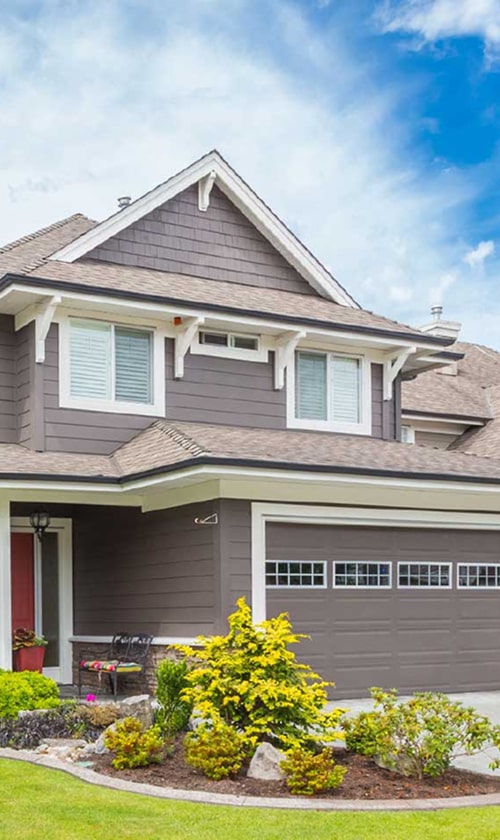Understanding Furnace Efficiency and AFUE

Choosing the right gas furnace involves looking at how efficient it is. Furnace efficiency is measured using the AFUE, which stands for Annual Fuel Utilization Efficiency. This helps us know how much of the fuel turns into heat. Let’s break it down further and see how the AFUE rating and furnace types can impact your decision.
The Importance of AFUE Ratings
Every furnace comes with an AFUE rating, which is key in knowing its energy efficiency. This percentage tells us how much energy is used to heat our home versus how much is wasted. For example, a furnace with a 90% AFUE means 90% of the fuel becomes heat, while 10% is lost.
AFUE ratings help us compare different furnaces. Higher ratings mean better efficiency and less energy loss. If we choose a furnace with a high AFUE, we can save more on energy bills over time. This is why checking the AFUE is crucial when selecting a furnace.
Comparing High-Efficiency and Standard Furnaces
There are two main kinds of furnaces: high-efficiency and standard. High-efficiency furnaces have AFUE ratings between 90% and 98.5%. They use less energy and save us money in the long run, although they often cost more upfront.
Standard furnaces usually have AFUE ratings between 80% and 89%. While they cost less initially, they may result in higher energy bills. If we’re focusing on long-term savings and reducing energy use, a high-efficiency furnace may be the better option. Comparing these choices helps us find the most suitable furnace for our needs.
Types of Gas Furnaces for Home Heating
When it comes to choosing a furnace for our homes, there are a variety of types available. Each type has its pros and cons. Understanding the differences in fuel sources, performance features, and alternatives can help us make smart choices.
Choosing Between Natural Gas, Oil, and Propane Furnaces
Natural gas furnaces are common due to their availability and efficiency. They’re often the most economical option if our home is already connected to a gas line. Oil furnaces are popular in areas without natural gas access. They require a storage tank and usually cost more to operate. Propane furnaces work similarly to natural gas ones but are suitable for rural places where propane tanks are needed for storage.
We need to think about fuel availability and cost in our area. Propane and oil might be more expensive than natural gas. Safety and environmental impact are also key. Natural gas and propane have lower emissions compared to heating oil. These factors help us decide which fuel source meets our needs best.
Single-Stage vs. Two-Stage vs. Modulating Gas Furnaces
Single-stage furnaces run at full capacity all the time. This can lead to temperature swings and may not be as energy efficient. Two-stage furnaces operate at two different levels. They start at a lower setting and switch to high when needed. This helps in maintaining a more even temperature.
Modulating gas furnaces adjust their output continuously. This results in precise temperature control and greater efficiency. These furnaces can be the most comfortable option since they match heating needs closely. Deciding which to choose depends on our preferences for comfort, energy savings, and upfront costs.
Electric Furnaces: An Alternative to Gas
Electric furnaces offer a gas-free option for home heating. They’re typically easier to install since they don’t need a gas line. While often more expensive to operate, they’re cleaner and don’t emit carbon monoxide. Electric furnaces convert electricity into heat through resistance heating elements.
These units are preferable in areas with lower electricity costs or homes where installing gas is challenging. We should weigh the operating cost against the benefits of installation and maintenance ease. Electric options are good alternatives if we prioritize safety and environmental impact.
Factors to Consider When Selecting a Furnace

Choosing the right furnace involves more than just picking one that fits our budget. Sizing, ductwork, and climate form the backbone of our decision-making process, helping us narrow down the options to the perfect fit.
Sizing Your Furnace: The Role of Square Footage and Insulation
Properly sizing a furnace is crucial. If our furnace is too small, it won’t heat the home efficiently. An oversized furnace can lead to higher energy bills and uneven heating. Calculating the size of the furnace involves evaluating the home’s square footage and quality of insulation. When we know how our insulation retains heat, we can select a furnace that delivers optimal performance.
We might wonder why insulation plays such a vital role. Insulation affects how much heat our home retains. Homes with poor insulation may need a more powerful furnace to maintain a comfortable temperature. However, with dense insulation, a smaller capacity unit could suffice. When we match the furnace size to the home’s actual needs, we ensure our comfort while minimizing energy waste.
Importance of Ductwork and Ventilation
Ductwork is often overlooked, but it’s a critical aspect of our heating system. Efficient ductwork ensures that the warm air from the furnace circulates evenly throughout our home. Leaky or improperly installed ducts can lead to significant heat loss, making any furnace work harder than necessary.
Let’s consider ventilation as well. Proper ventilation helps maintain indoor air quality. Keeping ducts clean and well-sealed contributes to both efficiency and health. We should inspect and maintain our ductwork regularly to ensure it can handle the demands of the furnace we choose. This attention to detail in ventilation and airflow aids in optimal furnace performance.
Evaluating Climate Impact on Furnace Choice
Climate significantly impacts which furnace is suitable for our home. In mild climates, we may consider a furnace that offers more moderate output, as the demand for heat is not constant or extreme. Conversely, homes in cold climates require a robust furnace capable of maintaining warmth during freezing temperatures.
When choosing, we need to assess the average winter temperatures in our area. Homes in colder regions benefit from energy-efficient furnaces that can run longer without excessive fuel consumption. By understanding the climate and its demands, we can ensure our furnace selection aligns with our heating needs, providing comfort and efficiency.
Cost Considerations for Gas Furnace Installation
When looking into gas furnace installation, it’s important for us to consider both the upfront cost and the potential energy savings over time. A well-chosen furnace can efficiently heat our home and save on future energy bills.
Understanding New Furnace Cost Variables
Several factors affect the price of a new furnace. Type of furnace plays a big role. High-efficiency models often cost more but can lower our energy bills. Installation fees also vary depending on complex setups or special requirements.
Size is another critical factor. We need the right-sized furnace for our home to avoid overworking or underusing it, which both waste energy. Brand reputation can also impact price. Some brands are known for quality and reliability, which might justify a higher cost. Additionally, warranty options may add to the initial purchase but offer peace of mind.
Balancing Initial Investment with Long-Term Energy Savings
Choosing a furnace involves balancing initial investment against long-term savings. Investing in a high-efficiency furnace may cost more initially. Yet, the savings in energy bills over time can make the extra cost worthwhile.
We should assess energy efficiency ratings carefully. A furnace with a high Annual Fuel Utilization Efficiency (AFUE) rating uses less fuel, which saves money over the years. Considering future energy costs and the expected lifespan of the furnace helps in making an informed decision. Proper maintenance also ensures that we maximize long-term savings by improving the system’s efficiency and longevity.
Optimizing Furnace Performance and Comfort
Choosing the right gas furnace doesn’t stop at the purchase. To maximize comfort and efficiency, we must consider recent advancements and ensure our systems are well-maintained. Smart technology and routine professional checks play a vital role in achieving peak performance.
Innovations in Furnace Technology
Modern gas furnaces come with variable-speed blowers that adjust their speed based on our home’s heating demands. This innovation not only improves comfort but also increases efficiency.
Two-stage heating is another feature that balances comfort and performance. It allows the furnace to operate at a lower setting for mild days and a higher setting for colder ones.
These technologies help us maintain a consistent temperature, reducing energy waste.
The Addition of Smart Thermostats and Zoning Systems
Integrating a smart thermostat into our home heating system can significantly enhance comfort and save energy. These devices learn our preferences and adjust heating schedules automatically.
Zoning systems take it further by allowing us to set different temperatures for various areas in our home. Using zoning, we can heat only the parts of the house that are in use, which is efficient and tailored to our needs.
Together, these systems offer precise control over how we heat our homes.
Regular Maintenance and Professional HVAC Consultation
To ensure our furnace runs smoothly, regular maintenance is crucial. We should schedule checks with an HVAC professional at least once a year. This helps in identifying potential issues before they become major problems.
A qualified HVAC technician can clean components, check for wear, and tune the system for optimal performance. This not only extends the life of our furnace but also keeps it running efficiently, maintaining comfort throughout the year. Regular consultations ensure our system remains top-notch.




